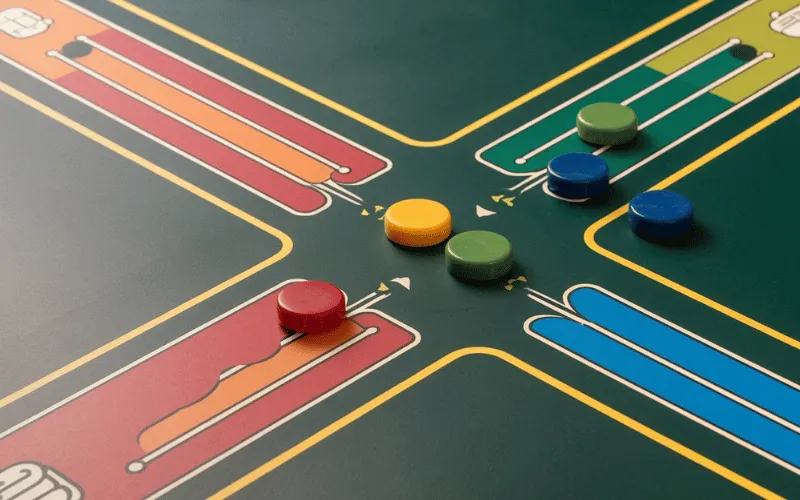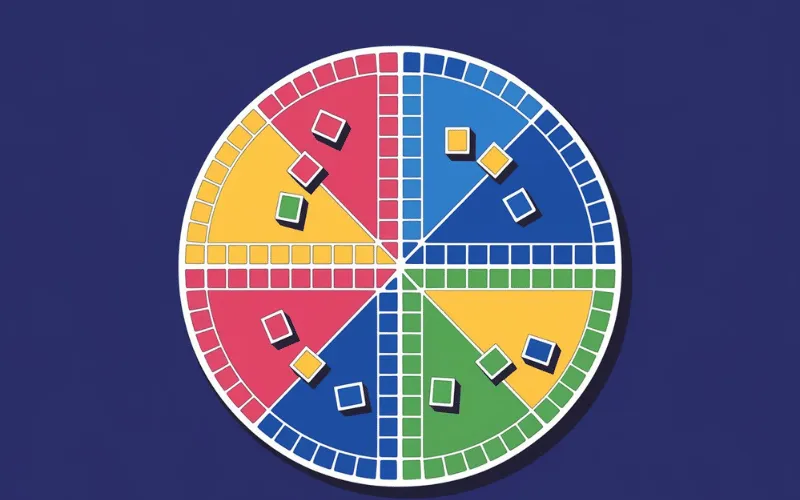Ludo Game Rules is one of the most popular board games across the world, loved by both kids and adults for its mix of strategy, luck, and fun. Whether you’re playing on a traditional board or through a mobile app, understanding the Ludo game rules is key to enjoying and mastering this classic pastime. This guide will explain everything you need to know about how to play Ludo, from the setup and basic moves to advanced strategies that can help you win more often.
1. Introduction to Ludo
Ludo is a turn-based strategy board game that originated from the ancient Indian game Pachisi. It is designed for 2 to 4 players, each assigned a specific color—red, blue, green, or yellow. The goal of the game is simple: move all four of your tokens from the starting area to the home area before your opponents do. However, success depends not only on rolling the dice but also on making smart moves according to the Ludo game rules.
2. Game Setup
Before starting, each player chooses one color and places their four tokens in their respective starting circles, also known as the “yard.” The square board is divided into four colored zones, each representing one player’s territory. The center of the board, called the “home,” is where players must bring all their tokens to win.
Each player takes turns rolling a single six-sided die. The player who rolls the highest number typically starts the game, and the play continues in a clockwise direction.
3. Basic Ludo Game Rules
Here are the fundamental Ludo game rules that every player should know:
- Starting a Token:
To move a token out of the yard and onto the board, a player must roll a six. If you roll a six, you can either move a new token onto the board or advance an existing token by six spaces. - Rolling a Six:
When a player rolls a six, they get an extra turn. However, if you roll three consecutive sixes, your turn is forfeited, and no token moves for that roll. - Movement:
Tokens move clockwise around the board based on the number rolled on the die. The exact number must be rolled to move a token into the home area. - Capturing an Opponent’s Token:
If your token lands on a square occupied by an opponent’s token, the opponent’s token is sent back to their yard. The capturing player gets an additional roll as a reward. This is one of the most exciting parts of Ludo game rules, as it adds a competitive element to the game. - Safe Squares:
Some squares on the board, typically marked with a star, are safe zones. Tokens that land on these spaces cannot be captured by opponents. - Winning the Game:
The first player to move all four tokens into their home area wins the game. The remaining players can continue playing to determine second, third, and fourth places.
4. Understanding the Path

Each player’s token follows a fixed path around the board. Once a token completes one full circle, it moves up the player’s colored path toward the home triangle in the center. Players must roll the exact number needed to move into the home area—if the number is too high, the token must wait for the next turn.
This rule often leads to tense moments near the end of the game, as players try to land precisely on the home square.
5. Strategic Tips Based on Ludo Game Rules
While luck plays a big role in Ludo, strategy is equally important. Here are a few strategic tips to improve your chances of winning:
- Use Sixes Wisely:
Getting a six is a golden opportunity. Instead of rushing all tokens out at once, decide strategically whether to move a token already on the board or bring a new one out. Managing your tokens carefully can protect them from being captured. - Occupy Safe Zones:
Try to land your tokens on safe squares whenever possible. This prevents opponents from sending your pieces back to the yard. - Attack and Defend:
Capture opponent tokens when you can, especially if they’re close to their home stretch. However, don’t expose your tokens unnecessarily—keeping them grouped can add protection. - Balance Your Moves:
Don’t focus on just one token. Spread your movement among multiple tokens to increase your chances of survival and faster completion. - Plan for Exact Rolls:
As you near your home area, plan moves carefully to ensure you get the exact number needed to enter. A wrong move can leave your token vulnerable.
6. Variations in Ludo Game Rules
Depending on where you play, some versions of Ludo have slightly different rules. For instance:
- Team Ludo:
When four players are playing, partners can team up, with the winning condition based on both players bringing all their tokens home. - Bonus Rules:
Some mobile or online versions of Ludo include power-ups, shortcuts, or additional dice for faster gameplay. - Timed Games:
Online platforms may limit turns to a few seconds to make the game more competitive.
These variations make the Ludo game rules flexible and adaptable for different settings—whether casual play with friends or intense online matches.
7. Ludo in the Digital Era
In recent years, Ludo has seen a massive resurgence thanks to online and mobile versions. Apps like Ludo King, Ludo Club, and others have made it easy for people to play anytime and anywhere. These digital versions strictly follow traditional Ludo game rules, with added features like chat, multiplayer modes, and tournaments that enhance the overall experience.
Conclusion
Online Ludo continues to be one of the most beloved board games because it’s simple yet deeply strategic. Mastering the Ludo game rules is the first step toward becoming a skilled player. While luck will always play its part, understanding when to attack, defend, or advance your tokens makes all the difference. Whether you’re rolling dice on a physical board with family or tapping on your phone in an online match, Ludo offers endless entertainment and a fair test of both patience and strategy.
















